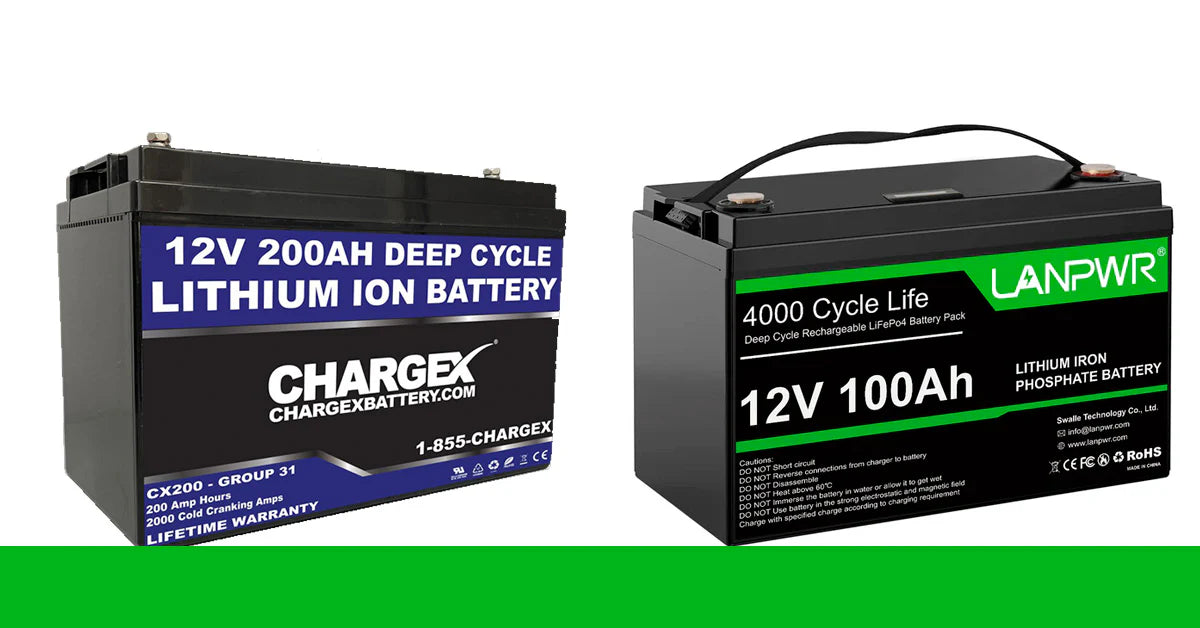Lithium Iron Phosphate batteries require constant monitoring to preserve their longevity and efficiency, so tracking how much charge they hold can be crucial. Here are a few proven strategies and tools you can use for accurately gauging this figure:
- Utilizing a Voltmeter or Multimeter
An efficient way of checking the charge status of LiFePO4 batteries is using either a voltmeter or multimeter with voltage measuring capabilities. LiFePO4 cells generally feature an estimated nominal voltage of about 3.2V per cell and should reach full charge around 3.6V before becoming discharged at 2.5V per cell
Step-by-Step Process:
Connect the voltmeter to both of your battery's positive and negative terminals and read its voltage output on a voltmeter. Compare it against the voltage range provided with your specific battery type (usually found within its documentation).
- Battery Management System (BMS)
Many LiFePO4 battery packs feature a Battery Management System to monitor the state of charge (SoC), voltage, temperature, and other critical details about each pack's state of charge (SoC), voltage, temperature, and other essential metrics.
BMS usage:
Access the BMS interface through your battery's display or its connected app to monitor the remaining charge percentage (SOC%) and other parameters to ensure safe battery operation.
- Specific Gravity Test (For Liquid Electrolyte Batteries)
This approach may not apply to all LiFePO4 batteries with liquid electrolytes that are accessible. However, hydrometer testing can be used to gauge its specific gravity, which changes with charge levels accurately.
Procedure:
Extract an electrolyte sample with the hydrometer, measure its specific gravity, and refer to your battery manual for specific gravity readings corresponding to various charge levels.
- LED Indicators
Modern LiFePO4 batteries feature LED indicators with built-in LED indicators that display charge levels through color codes or flashing lights.
How to use:
Locate and observe the indicator on your battery; observe its display color or number of flashes to assess charge status.
- Smart Chargers Smart chargers offer another effective means for checking battery charge levels; not only will they charge them, but their digital readout also displays charge levels as they charge.
Using Smart Chargers:
Connect the LiFePO4 battery directly to the charger.
Display panels allow users to easily read charging status and battery level information, using features built into chargers to optimize charging processes and ensure battery health.
- Software and Mobile Apps
LiFePO4 battery packs used for high-tech installations may connect wirelessly with software applications to provide detailed readings on battery performance and charge level via wireless communication. Typical Applications of LiFePO4 Battery Packs in High-Tech Setups .
Appliance Use:
Connect your battery pack via Bluetooth or Wi-Fi and access its designated software or app. Use its features to monitor its health metrics and forecast its needs. Ultimately, you can take control over how and when to charge.

Importance of Checking Charge Level of LiFePO4 Batteries
Maintaining optimal performance and longevity can only be accomplished by regularly checking charge levels in LiFePO4 battery packs - checking their state of charge is vital! For many reasons, it should be monitored. These may include:
Maximize Battery Life: LiFePO4 batteries have an extended lifespan. Checking charge levels regularly to prevent deep discharges that shorten battery lifespan can ensure optimal use from each cycle, providing more excellent value from investment and greater cycle life.
Prevents Overcharging: Overcharging LiFePO4 batteries can lead to reduced efficiency and even irreparable damage over time, so by carefully monitoring their charge level, you can ensure they do not surpass their maximum voltage, thus protecting their capacity and health.
Assure Reliable Performance: Relying on reliable power sources such as solar energy systems or electric vehicles requires reliable battery performance, making regular monitoring essential. Regular checks enable you to ensure they continue meeting power demands efficiently under different load conditions and remain charged enough.
Safety: Although LiFePO4 batteries tend to be safer and more stable than their lithium-ion counterparts, keeping within their charge and discharge parameters is crucial in maintaining their integrity and protecting user safety. Regular monitoring helps detect any abnormal behaviors early, such as overcharging or excessive discharge that could create risks to individual safety.
Energy Efficiency: Understanding your battery charge level enables more effective energy management. In solar power systems, knowing exactly how much stored energy is available when sunlight levels decrease can assist with planning and controlling energy consumption more efficiently.
Cost Savings: Efficient battery use supported by regular charge checks can result in significant cost savings. By avoiding conditions that prematurely degrade batteries, such as deep discharging and overcharging, such as deep discharge rates or deep overcharging, early replacement costs and maintenance are significantly reduced.
Final Word
Effectively monitoring the charge level of your LiFePO4 battery requires the right tools and a bit of know-how. By regularly checking your battery's charge, you can optimize its usage and extend its lifespan, ensuring reliable performance from your power source. Always refer to the manufacturer's instructions for specific guidance tailored to your battery model.














Leave a comment
This site is protected by hCaptcha and the hCaptcha Privacy Policy and Terms of Service apply.